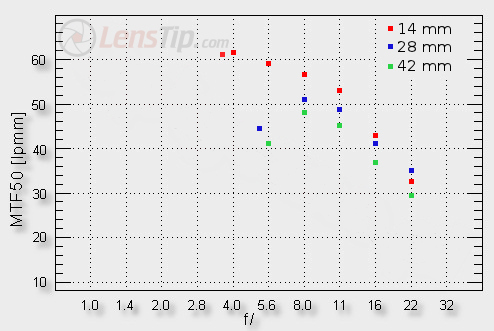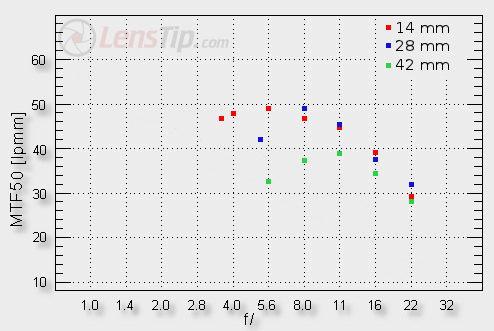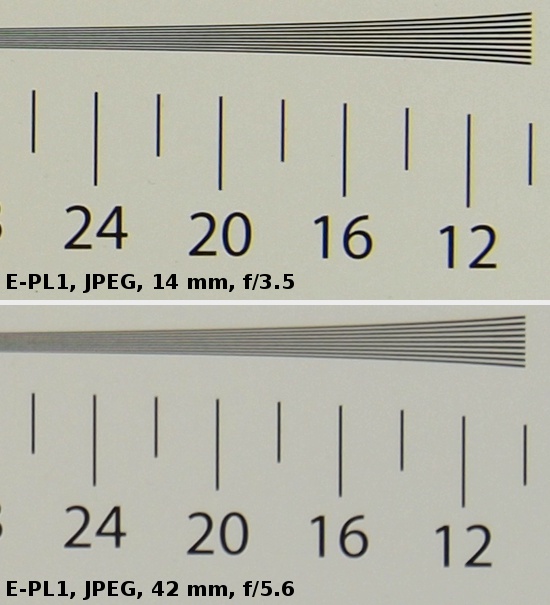Panasonic G X VARIO PZ 14-42 mm f/3.5-5.6 ASPH. P.O.I.S.
4. Image resolution
Let’s see how the Panasonic 14-42 mm compares here.

Please Support UsIf you enjoy our reviews and articles, and you want us to continue our work please, support our website by donating through PayPal. The funds are going to be used for paying our editorial team, renting servers, and equipping our testing studio; only that way we will be able to continue providing you interesting content for free. |
- - - - - - - - - - - - - - - - - - - - - - - - - - - - - - - - - - - - - - - - - - - - - - - -
As you see you can’t have any reservations about the performance at the shortest focal length - the images are sharp even at the maximum relative aperture. On stopping down the diffraction makes itself felt and it is the main limiting factor of the lens’s resolution. The situation at longer focal lengths is a bit different - in this case, at the maximum relative aperture the image brushes against the usefulness limit. Fortunately on stopping down a bit it improves. Overall the image in the frame centre is beyond any serious reproach.
Unfortunately the performance on the edge of the frame is quite another story – it’s enough to look at a graph below to become convinced of it.

The image at the shortest focal length still isn’t alarming. Here, even at the maximum relative aperture the resolution values are nothing you can carp about. The problems are becoming more serious with the increase of the focal length, though. In the middle of the range, at the maximum relative aperture the lens is on the decency limit and at 42 mm it descend noticeably below it. What’s more, at the maximum relative aperture the stopping down doesn’t bring any good results because you are never able to exceed the 40 lpmm level.
Should such results surprise us? Not really. To tell you the truth I didn’t expect better values when I started testing this lens. The Panasonic 14-42 is a quite slow lens and there is no room where it could spread its wings. Near the maximum relative aperture it is limited by chromatic aberrations, not to be avoided in this case. Stopping down helps only slightly because with such an aperture the diffraction makes itself felt very quickly. What’s more, the specific build of this lens forces some compromises as well – small dimensions, fitting little mirrorless cameras well, are a priority here but it means any records aren’t possible because the laws of physics.
At the end we present crops taken from our test chart photos saved as JPEG files.
 |






